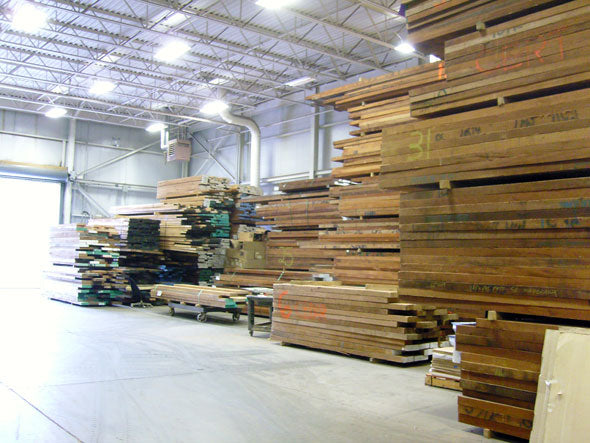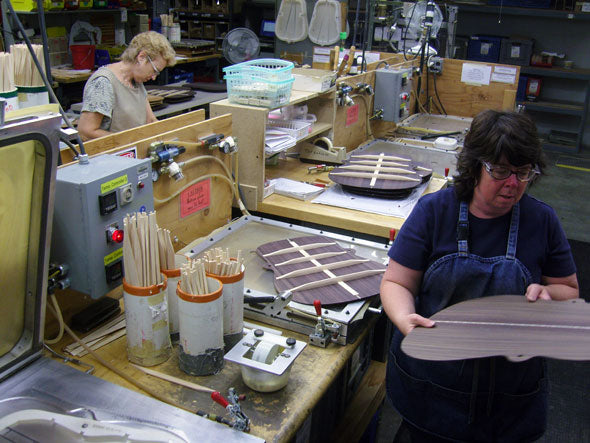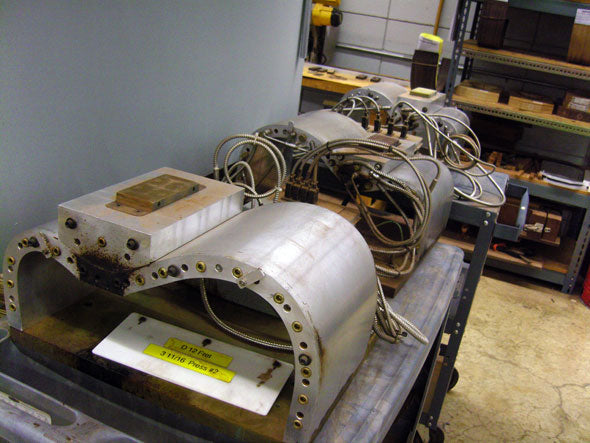Factory Tour: Inside Martin Guitars
Nestled in the hills of the Lehigh Valley in Nazareth, Pennsylvania, is not just one of the oldest guitar makers in the United States, but one of our country’s oldest businesses, period. C.F. Martin & Co. was founded in 1833, just 57 years after the signing of the Declaration of Independence, and is today one of the largest and most respected makers of flattop acoustic guitars in the world. Martin employs over 600 people and makes tens of thousands of instruments per year. We were excited to tour their state-of-the-art facility in which they combine generations-old guitar building techniques with efficient, modern technology. Join us as we see what goes into making some of the world’s finest acoustic guitars.
The current Nazareth Martin factory was built in the 1990s, and replaced the original factory only a couple miles down the road. All the mid-level, high-end, and custom shop guitars are made here, well over 20,000 per year (the low end stuff is made in Mexico). Making that many guitars requires a massive amount of wood, and Martin certainly has quite a supply. In this colossal room the wood that will one day become a Martin guitar is stored and cut down to a more usable size.
This is the acclimation room. Rough milled wood is stored here for an extended period of time to further dry and get used to the fact that it’s no longer part of a tree. It was amazing seeing the scale of this room.
This is the enormous milling area where the roughly cut woods become the raw materials for guitar building. While we were shown this part of the facility, we didn’t get to spend much time here, most likely because it is the part of the factory where there is actual danger. Overall, it was awfully clean for a wood mill, thanks in large part to the vacuum system that is built into each station (notice the hoses) that carry away almost all the sawdust. This system can be seen throughout the entire factory, and we’ll get a closer look later.
Here are some neck blanks that have been milled and will be sent over to the building area soon.
This is an important first step: matching woods. This worker is an expert at matching these pieces of rosewood based on factors like color and grain. She knew practically every piece of wood in these stacks, having gone through them over and over throughout the day to find the right matches.
This rosewood hasn’t been finished yet to bring out the deep, rich color we associate with the species, but under these bright lights it’s easy to see the variations in shading and grain from one piece of wood to another.
Other woods, like this spruce, which will be used for the top of a traditional acoustic guitar, go through a different kind of inspection process. Using strong backlighting, builders can determine if there are any hidden structural imperfections within the wood that could affect strength and potentially the tone of the guitar.
These transparent patterns are used to line up the raw tops so the builders can see if any undesirable marks in the wood will be visible once the guitar is made. If there is a dark line or spot somewhere that could be hidden with a pickguard on the left, for example, perhaps that top is used for a left-handed guitar. Notice the tops completed on the right – those “ears” stay on through most of the build process to aid in handling the guitar.
Here’s a builder about to start cutting some tops, using this slick, completely automated laser.
Here’s the inside of that machine; watching the laser zip around making ultra clean cuts (which don’t require sanding, it appears) was pretty cool.
The next step for the tops is to be routed for the rosette, the often ornate decoration around the soundhole. There are many women who are responsible for building guitars at Martin, and the sign on the side of this machine pays tribute to women who roll up their sleeves and work in manufacturing. During WWII, a drawing of a character named Rosie The Riveter became famous as the unofficial spokesperson for these strong women; so, this machine is affectionately named “Rosie The Rosetter”.
Rosie does a nice clean job – here’s a test route done on a scrap piece of wood.
Next, the inlay will be glued into the rosette’s route. This is precision work and we were stunned by the speed and accuracy this builder showed while installing those delicate strips.
A finished rosette. The fingerboard will cover the small gaps at the top, and you can also see in this picture how, previously, the wood was correctly patterned so that knot would be cut out as the soundhole is created.
One of the building characteristics that has been often attributed to Martin guitars as a milestone in guitar building is the “X” bracing that is used on the tops. Martin was perhaps not the first builder to ever X-brace a guitar top -the design rose from the community of German guitar builders in which Martin belonged in the 1800s- but Martin was the first to put the X-bracing design into a production instrument. The X-bracing allowed the top to withstand much more tension, and gave players in the 1920s the use of new steel strings that were louder and more durable than their traditional gut strings.
Here a builder is gluing bracing onto the rosewood backs. It’s easy to forget how much structural reinforcement exists inside an acoustic guitar.
Martin uses scalloped braces to save weight while retaining the strength the bracing provides. Here, the braces are shaved down by hand.
Next, it’s time to bend the sides.
Modern, purpose-built machines use heat to bend the wood for the sides into the proper shape, while…
…there are still some ancient heat shaping devices still on the bench and in use today. This unit is probably around 100 years old.
Once the sides are shaped, they are glued together.
All these clamps and good old fashioned clothespins are holding tight the kerfing, or flexible lining, that is glued to the edges of each side of the guitar to reinforce the joints between the sides, top and back.
Here is a better look at the kerfing after the glue has dried.
These neck blocks will go inside the guitar and are about to be marked with a laser with the serial number and model number.
Like we mentioned before, Martin has an advanced sanding and dust-control system throughout the entire plant. Here is a good example of some of the infrastructure. All these sanding stations hook into a central air-quality system, which keeps the whole facility surprisingly dust-free.
Using a clear plastic template, this worker is cutting notches in the kerfing to make room for the braces that are glued to the back. Everything will fit tight and snug together to create a resonant structure.
click page 2 to continue reading
































